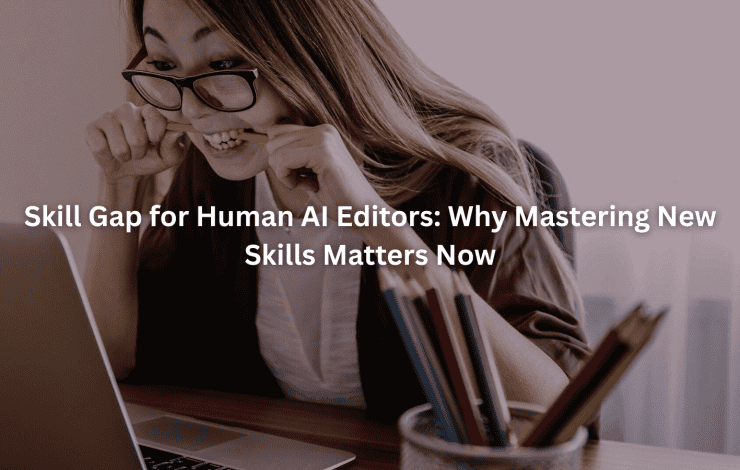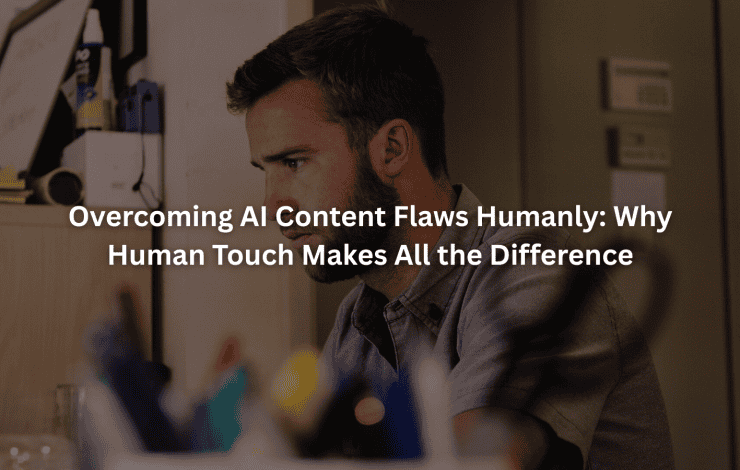Silicon Valley’s biggest players keep running into the same problem – their AI just won’t stop making things up. These programs, worth billions in development, still act like that one kid in class who never did the reading but talks anyway.
The AI’s little white lies (tech folks call them hallucinations) show up in everything from casual chats to research papers, and they’re getting harder to spot. Anyone who’s spent time with these tools knows the feeling – that moment when you’re not quite sure if the AI is telling the truth or just doing a really good job of faking it.
Key Takeaways
- Don’t take AI’s word for it – fact-check everything, especially when it matters (like your health or legal stuff)
- The AI gets better with cleaner data, but let’s face it, it’s still gonna make stuff up
- People deserve to know when they might be getting fed a line by an AI, because right now most don’t have a clue
Getting a Handle on AI’s Truth Problem
The worst AI mess-ups tend to show up in places where being wrong isn’t just embarrassing – it’s dangerous. While there’s no perfect solution, some people have figured out ways to catch these slip-ups before they turn into real problems.
Keeping Humans in the Loop
Someone’s got to babysit these machines. The teams running AI need to spot the weak points before things go south. From downtown medical practices to law offices on Park Avenue, people spend their days double-checking what the AI spits out. This is where the challenges for human editors become clear — not perfect, but beats the alternative.
Real People Doing Real Checking
Picture this: a busy emergency room. When an AI flags something in a patient’s chart, there’s always a doctor who takes a second look. They’ve seen thousands of cases – enough to know when something seems off. That back-and-forth between doctor and machine? That’s what keeps people alive and lawyers away.
Spotting AI’s Tall Tales
Working with AI means developing a built-in BS detector (like dealing with that cousin who swears they almost made it to the NFL). Ask yourself: Where’d this come from? Does anyone else back this up? Does this pass the smell test? The more people push back on what AI tells them, the less likely they’ll buy its creative writing.
Making AI Training Data Better
“Garbage in, garbage out” hits different when you’re talking about AI. These things learn from whatever they’re fed, so cleaning up their diet might keep them honest. [1] Here’s what needs work:
Getting the Right Mix of Data
AI needs to see the whole picture, not just what some programmer in Silicon Valley thinks matters. When these systems only learn from one slice of life (think wealthy suburbs or tech hubs), they start writing fiction about everything else. Like trying to understand America by never leaving Manhattan.
Finding the Bad Stuff in Training Data
Cleaning up AI’s learning material isn’t glamorous, but someone’s got to do it. Data scientists spend their days running tests, looking for blind spots. When they find them, they patch them with info from voices that got missed the first time around. A reliable workflow for human AI editing helps here, making sure nothing slips past undetected.
Double-Checking Everything (Again)
Even after the AI does its thing, the work’s not done. Fact-checkers (both human and digital) comb through everything looking for red flags. Takes longer? Sure. Better than letting AI tell your grandmother the wrong dose for her heart meds.
Using Different Tools Together
Sometimes the best way to catch an AI in a lie is to have another AI play fact-checker. It’s like having three different reporters confirm a story. These systems can tear through mountains of data in minutes, flagging anything that doesn’t match up with what we know is true.
Teaching People About AI’s Limits
People need to know when AI might be pulling their leg. It’s not enough to just make better AI – we’ve got to help people spot when it’s not telling the truth. [2]
Showing How AI Gets Things Wrong
The best way to help people understand AI’s mistakes is to show them real examples. When people see how convincing these AI hallucinations can be, they’re more likely to think twice before trusting everything their chatbot tells them.
Learning to Spot the Fake Stuff
Think of it like teaching media literacy, but for AI. People need simple ways to check if what they’re reading makes sense. The more they practice spotting AI’s mistakes, the better they get at knowing when something sounds too good (or weird) to be true.
Technical and Ethical Considerations

As AI continues to evolve, understanding the technical and ethical implications of its limitations becomes necessary.
Limitations of Current AI Models
Current AI models, like large language models, struggle with contextual understanding. Their inability to grasp nuances can lead to overconfidence in incorrect outputs. Recognizing these limitations is the first step toward a more responsible application of AI technology.
Model Complexity and Overconfidence in Pattern Extrapolation
The complexity of AI models can lead to overconfidence in their predictions. This phenomenon occurs when AI systems fill knowledge gaps with fabricated information, presenting it as fact. Understanding this tendency can guide developers in creating more robust systems.
Inherent Challenges in Achieving Contextual Understanding
AI’s struggle with contextual understanding stems from its reliance on patterns rather than genuine comprehension. This lack of deep understanding can result in outputs that sound plausible but are fundamentally flawed.
Ethical Implications of AI Hallucinations
The ethical implications of AI hallucinations are significant. In sectors like healthcare and law, misinformation can lead to dire consequences. It’s crucial for developers to prioritize accountability and transparency in AI deployments.
Risks in Healthcare, Law, and Autonomous Systems
AI hallucinations pose distinct risks in critical sectors. For example, a chatbot providing incorrect medical advice could endanger lives. Similarly, legal systems relying on flawed AI outputs may inadvertently lead to wrongful convictions. These scenarios illustrate the urgent need for robust oversight and verification processes.
Accountability and Transparency in AI Deployments
Establishing accountability frameworks is essential for AI systems. Users should have clarity on how AI-generated content is verified and the processes involved in ensuring accuracy. This transparency can foster trust and promote responsible AI use.
Future Directions for AI Development
As AI technology advances, new strategies emerge for reducing hallucinations and enhancing reliability.
Advances in Reducing Hallucinations Through Model Improvements
Ongoing research aims to refine AI models to minimize hallucinations. By addressing the root causes of inaccuracies, developers can create systems that provide more reliable outputs.
Role of Explainable AI in Mitigating Misinformation
Explainable AI plays a crucial role in addressing hallucinations. By providing insights into how AI systems arrive at their conclusions, users can better assess the credibility of the information presented.
Balancing Innovation with Safety
While pushing the boundaries of AI innovation, safety must remain a priority. Ensuring that AI systems are developed with robust safeguards can mitigate the risks associated with hallucinations.
Strategies for Responsible AI Integration in Society
As AI becomes more integrated into daily life, establishing guidelines for its responsible use is essential.
Regulatory and Policy Frameworks Addressing AI Errors
Implementing regulatory frameworks that address AI errors can provide clarity on accountability. Such policies can guide the development and deployment of AI technologies in a manner that prioritizes user safety.
Enhancing Reliability and Trust in AI Systems
Building trust in AI systems requires a concerted effort from developers, users, and policymakers. By prioritizing transparency, accountability, and user education, we can foster a more reliable AI landscape.
Developing Robust Verification Frameworks
Creating verification frameworks that involve multi-level checks can significantly improve the reliability of AI outputs. These frameworks should incorporate human oversight at various stages to ensure accuracy.
Human-AI Collaborative Validation Models
Encouraging collaboration between humans and AI in validation processes can enhance the overall quality of AI outputs. By leveraging human expertise alongside AI capabilities, we can create a more trustworthy system.
Leveraging User Feedback to Improve AI Accuracy
Collecting user feedback is invaluable for improving AI systems. By understanding users’ experiences and concerns, developers can make necessary adjustments to enhance accuracy and reliability.
Mechanisms for Reporting and Correcting Errors
Establishing clear mechanisms for reporting and correcting errors is vital. Users should have accessible channels for raising concerns about inaccuracies, ensuring that these issues are addressed promptly.
Continuous Learning from User Interactions
AI systems should be designed to learn from user interactions continually. This ongoing feedback loop can help in refining AI outputs and reducing the frequency of hallucinations.
Integrating AI Hallucination Awareness in User Interfaces
Incorporating awareness of hallucinations into user interfaces can promote skepticism and verification. By displaying confidence levels and uncertainty, users can better gauge the reliability of AI-generated information.
Transparent Display of Confidence Levels and Uncertainty
Transparency regarding AI outputs is crucial for user trust. Displaying confidence levels and uncertainty can help users make informed decisions about the information they receive.
Design Approaches to Encourage User Skepticism and Verification
Designing user interfaces that encourage skepticism can lead to more critical engagement with AI outputs. This approach can help users develop a habit of verifying information rather than accepting it blindly.
Cross-Disciplinary Approaches to Mitigate Hallucinations

Are You a Digital Agency?
White Label SEO Content Services for Agencies
Scalable, customizable, and results-driven content solutions for your clients.
Finally, collaboration across disciplines can play a significant role in addressing the challenges posed by AI hallucinations.
Collaboration Between AI Developers, Domain Experts, and End-Users
Bringing together AI developers, domain experts, and end-users can foster a holistic approach to mitigating hallucinations. Each stakeholder brings valuable insights that can enhance the quality and reliability of AI outputs.
Combining Technical Solutions with Human Judgment in Decision-Making
The integration of technical solutions and human judgment is crucial for effective decision-making. By leveraging both AI capabilities and human expertise, organizations can make more informed choices.
FAQ
How can human editors detect subtle AI hallucinations before they reach readers?
Human editors play a crucial role in identifying AI hallucinations, which can range from obvious AI-generated fake facts to subtle AI semantic errors. Detecting erroneous AI output often means cross-checking details through AI fact-checking and AI content verification tools.
Hallucination detection should focus on AI misinformation prevention, screening for AI response error rate patterns, and spotting deep learning mistakes hidden in otherwise fluent text.
AI human oversight helps catch machine learning errors, AI hallucination examples, and AI-generated misinformation that might pass unnoticed without thorough AI content auditing and manual review.
What role does AI training dataset quality play in reducing LLM hallucinations?
Many LLM hallucinations and neural network hallucinations stem from synthetic data errors or AI knowledge gaps within the training dataset. Poor AI training dataset quality increases hallucination frequency and the AI misinformation risk, leading to AI-generated false information.
Data-driven hallucinations often reflect AI bias reduction failures or algorithmic errors introduced during preprocessing. Improving AI model reliability requires reducing AI content flaws at the source, addressing hallucination causes in AI, and implementing AI safety protocols.
High-quality datasets improve AI trustworthiness, AI output accuracy, and AI content integrity while lowering AI confidence error rates and automated system hallucination challenges.
How does AI output validation work for hallucination reduction techniques?
AI output validation combines automated fact-checking AI systems with human evaluation to detect hallucination in chatbots, GPT hallucinations, and AI-based text generation errors. This process involves AI content screening for hallucinated data, identifying AI fact distortion, and flagging AI conversational errors.
Need a Strategic SEO Content Partner?
Let’s craft SEO content that ranks, converts, and grows your brand.
Talk to UsAI error mitigation strategies often rely on AI system transparency, AI explainability, and targeted AI error correction. By using AI content verification alongside AI critical evaluation, editors can address LLM output errors, AI-generated fiction, and AI hallucination impact.
Validation reduces AI-assisted misinformation and strengthens AI content trust while lowering AI hallucination statistics in real-world applications.
Why do hallucination causes in AI vary across different models?
Hallucination causes in AI differ because models have unique architectures, datasets, and training methods. Machine learning hallucinations in one system may stem from AI data bias, while another faces AI semantic errors due to flawed AI knowledge gaps.
Some hallucinations are AI-generated misinformation from unverified data sources, while others are AI-generated fake facts from AI confidence errors. AI hallucination challenges also depend on the AI model limitations, AI output accuracy measures, and hallucination detection capabilities.
Understanding these variables helps in applying hallucination reduction techniques, AI misinformation risk control, and AI content verification tools that address model-specific AI content flaws.
How should human oversight handle AI hallucination impact in critical industries?
In healthcare, law, and finance, AI hallucination impact can have severe consequences. AI misinformation risk here is tied to erroneous AI output, AI hallucination examples with legal or medical implications, and AI-generated misinformation that could cause real harm.
AI human oversight ensures AI safety protocols are followed, AI output accuracy is prioritized, and AI content integrity is maintained. Hallucination in automated systems can be mitigated by AI content auditing, AI fact-checking, and using AI content verification tools. That’s why vetting human AI editor skills is key to keeping misinformation out of critical sectors.
Reducing hallucination frequency in these sectors requires AI error mitigation, AI trustworthiness improvements, and strong AI accuracy improvement strategies to prevent AI-assisted misinformation from spreading.
Conclusion
AI hallucinations remain a challenging issue that calls for human oversight, high-quality data, and user education. By combining these efforts, we can build more reliable AI systems. Jet Digital Pro helps agencies navigate AI content complexities with scalable, human-edited SEO solutions. Contact us to strengthen your content strategy.
References
- https://medium.com/@dallinpstewart/the-amazing-advancements-toward-data-efficient-machine-learning-889b4393bea6
- https://www.researchgate.net/publication/377918379_On_the_Limits_of_Artificial_Intelligence_AI_in_Education
Related Articles
- https://jetdigitalpro.com/challenges-for-human-editors-of-ai-content/
- https://jetdigitalpro.com/workflow-for-human-ai-editing/
- https://jetdigitalpro.com/vetting-human-ai-editor-skills/
P.S – Whenever you’re ready,
we’re here to help elevate your SEO content.
Partner with us for strategic, scalable content that drives real organic growth.
Contact Us Now




